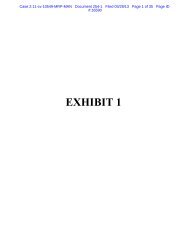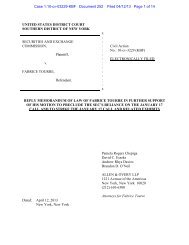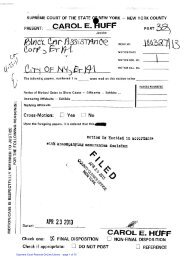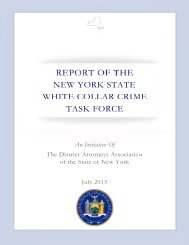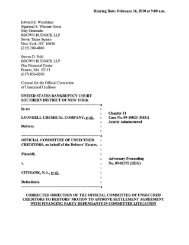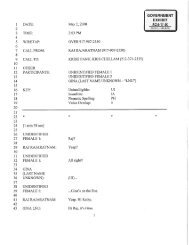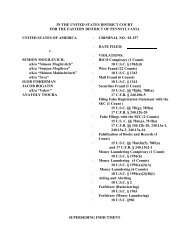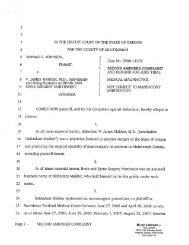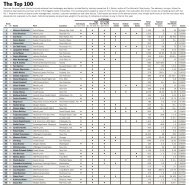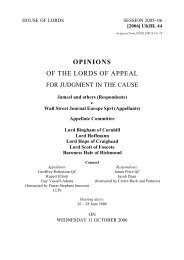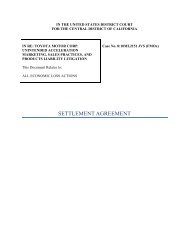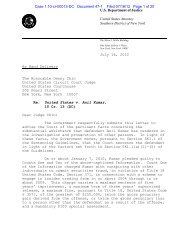Salz Review - Wall Street Journal
Salz Review - Wall Street Journal
Salz Review - Wall Street Journal
Create successful ePaper yourself
Turn your PDF publications into a flip-book with our unique Google optimized e-Paper software.
<strong>Salz</strong> <strong>Review</strong><br />
An Independent <strong>Review</strong> of Barclays’ Business Practices<br />
162<br />
12.55 Barclays’ Internal Audit Charter defines the objective of Barclays Internal Audit as<br />
being to “provide independent, reliable, valued, insightful and timely assurance to<br />
the Board and Executive Management over the effectiveness of governance, risk<br />
management and control over current and evolving risks, in the context of the<br />
current and expected business environment.” 254 The staffing of the Internal Audit<br />
function increased from 157 in 2003 to 611 in 2012. The function also increased its<br />
independence. Since 2003, the Chief Internal Auditor (CIA) has reported functionally<br />
to the Chairman of the Board Audit Committee and only administratively to the<br />
Group Chief Executive. Business unit audit teams have reported to the Group CIA<br />
since 2004.<br />
12.56 In 2009, Barclays Internal Audit was reviewed by an external assessor. The review<br />
concluded that it was an industry-leading function which complied with relevant<br />
codes and standards, and met the expectations of management, the Board and<br />
other stakeholders.<br />
12.57 However, some interviewees felt that the methodologies and metrics followed had<br />
resulted in some governance and control issues not being identified early enough by<br />
Internal Audit. Barclays has recently identified the need for certain changes, including<br />
more rotation of business unit auditors, greater audit focus on the investment bank<br />
to reflect its growth, a reduced number of auditable entities, and improved ways of<br />
reporting issues.<br />
12.58 Across the industry banks and professional bodies have been reviewing the remit of<br />
the internal audit functions to improve their ability to influence the effectiveness of<br />
governance, risk management and internal controls. A recent consultation document<br />
by the Chartered Institute of Internal Auditors has proposed that the scope and<br />
priorities of the audit function include the risk and control culture of the organisation<br />
and the risks of poor customer outcomes, giving rise to conduct or reputational<br />
risk. 255 We support these recommendations as a practical way to reinforce sound<br />
business practices.<br />
Recommendation 33: Internal Audit<br />
Barclays’ Internal Audit should ensure the effectiveness of its audits in each of<br />
the businesses to identify control issues, prioritising high-risk entities. This will<br />
be aided by developing specialist internal audit teams able to deal effectively<br />
with the bank’s more complex business units.<br />
The Internal Audit Charter should be updated and periodically reviewed to<br />
ensure that it covers all aspects of governance, control and risk culture, as the<br />
business and external environment evolves.<br />
254 Barclays Internal Audit Charter, 25 July 2012.<br />
255 Chartered Institute of Internal Auditors, Effective Internal Audit in the Financial Services Sector, 11 February<br />
2013.



